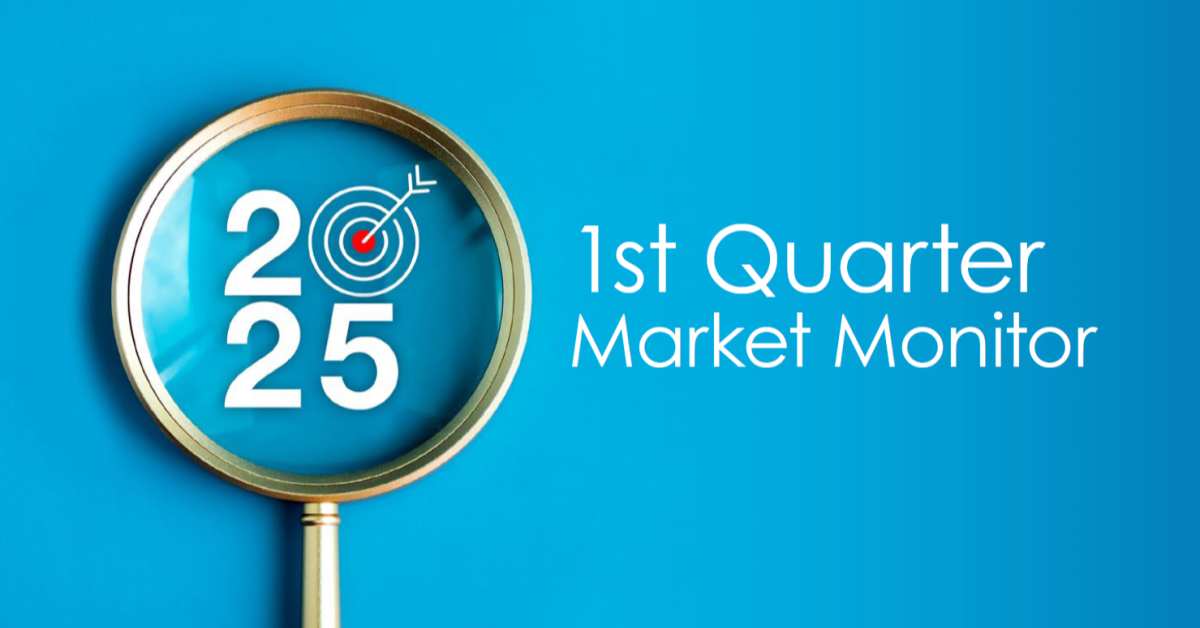Market Commentary
- Markets grappled with countervailing forces in the first quarter, but ultimately the bulls won the day with prices broadly up in the first three months of the year. On the positive side, strong economic data provided renewed hope for a “soft landing.” The bears roared back in response to the potential crisis of confidence in banking and falling corporate earnings. The Federal Reserve landed in the middle, sticking to its rhetoric of fighting inflation but doing so with modest increases.
- The Fed continued its effort to combat inflation, raising the Fed Funds Rate by 0.25% in both February and March. Following strong economic data earlier in the quarter, the Fed held fast to rhetoric that it would fight higher prices at the potential expense of economic growth. While the market had largely priced in the hikes this quarter, there was tremendous uncertainty with respect to policy action for the remainder of the year with the market seeing multiple percent shifts in expectations over a matter of weeks.
- The swift demise of Silicon Valley Bank and a small number of other U.S. banks created a uncertainty for the banking system at large. The material reaction of the market, perhaps stirred up by memories of the 2008/2009 global financial crisis, prompted government agencies to act quickly, supporting depositors and creating lending facilities for banks to access. By quarter end most contagion fears were allayed.
Fixed Income
- After suffering the worst year on record in 2022, fixed income markets rebounded with the Bloomberg Aggregate Bond Index returning 3.0% in the first quarter.1 Amid incredible interest rate volatility and tightening central bank policy, interest rates ultimately ended the quarter lower than where they began as inflation readings continued to trend lower and market expectations for a Fed pause, and even cuts, later in the year grew.
- Credit performed well with the Bloomberg US Corporate High Yield Index posting a 3.6% gain over the first three months.1 It was not a straight path however as high yield spreads widened in March as turmoil mounted in the banking sector but remain lower than the beginning of the year.
Equity
- U.S. markets saw a strong rebound in the first quarter, with the S&P 500 Index returning 7.5%1. A sharp reversal favored large cap growth names, especially in the information technology sector (+21.8%1). A shift away from financials, declining interest rates, and a preference for highly profitable companies in the face of recessionary fears fueled the surge. In contrast, small cap (Russell 2000 Index), while positive (+2.7%1), lagged large cap. Financials account for a larger portion of the small cap space and the disruption in the banking sector disproportionately impacted small cap companies compared to large cap companies.
- International developed equities were the standout in the quarter, as the MSCI EAFE Index returned 8.5%.1 A warmer winter in Europe and subsequent lower demand for fuel helped relieve concerns many had of Russia’s leverage over Europe as the primary commodity supplier. Germany, France and Italy all returned over 14% in the quarter1. A weaker U.S. dollar further aided non-U.S. investments.
- Emerging markets rose 4% in the first quarter1. Country performance was mixed. China benefitted from the continued strength coming out of Covid-19 lockdowns. Mexico continues to benefit from reorienting supply chains, or “near shoring,” following issues experienced during Covid. The Mexican stock market was up 20%2 for the quarter. India was a notable detractor, falling over 6% in the quarter1.
Real Assets
- Commodities were one of the few areas of the market that saw negative returns in the quarter, falling 5.4%1. The energy market was the notable detractor from the asset class as natural gas prices tumbled on the back of a warmer than expected winter and concerns eased over Russia’s control of supply in the region. Gold, often perceived as a “safe-haven” asset, moved higher amid the volatility.
- Real estate markets saw positive gains at the surface (+2.7%1) but under the hood it was not all rosy. Areas of the market with strong cash flow, such as self-storage, industrials and data centers, drove the positive results. However, the office market continued to struggle (-15.9%1) as investors grappled with the impact that hybrid/work-from-home policies will have on the sector. Additionally, the banking sector turmoil spilled into the REIT market as regional banks have large exposures to the commercial real estate market.
While volatility in the markets remained during the first quarter of 2023, broadly speaking, equity and fixed income markets saw a strong rebound. The Fed reiterated their fight against inflation at the potential expense of economic growth. Fear in the banking system from the fallout of Silicon Valley Bank was largely subdued by the end of the quarter. As we stated in our 2023 Outlook, Persistent Volatility, Moderating Inflation and a Bear Market Bottom are the three themes we see driving the market and coming to life over different time periods this year and beyond.
[1] Fiducient Advisors Quarterly Considerations March 31, 2023
[2] Fiducient Advisors Market Insights March 31, 2023
This report is intended for the exclusive use of clients or prospective clients of HCR Wealth Advisors. The information contained herein is intended for the recipient, is confidential and may not be disseminated or distributed to any other person without the prior approval of HCR Wealth Advisors. Any dissemination or distribution is strictly prohibited. Information has been obtained from a variety of sources believed to be reliable though not independently verified. Any forecasts represent future expectations and actual returns; volatilities and correlations will differ from forecasts. This report does not represent a specific investment recommendation. The opinions and analysis expressed herein are based on HCR Wealth Advisors’ research and professional experience, and are expressed as of the date of this report. Please consult with your advisor, attorney and accountant, as appropriate, regarding specific advice. Past performance does not indicate future performance and there is a possibility of a loss.
Comparisons to any indices referenced herein are for illustrative purposes only and are not meant to imply that actual returns or volatility will be similar to the indices. Indices cannot be invested in directly. Unmanaged index returns assume reinvestment of any and all distributions and do not reflect our fees or expenses.
Bloomberg Aggregate Bond Index covers the U.S. investment grade fixed rate bond market, with index components for government and corporate securities, mortgage pass-through securities, and asset-backed securities.
MSCI EAFE Index is an equity index which captures large and mid-cap representation across Developed Markets countries around the world, excluding the U.S. and Canada. The index covers approximately 85% of the free float-adjusted market capitalization in each country.
Bloomberg US Corporate High Yield Index covers the universe of fixed rate, non-investment grade debt. Eurobonds and debt issues from countries designated as emerging markets (sovereign rating of Baa1/BBB+/BBB+ and below using the middle of Moody’s, S&P, and Fitch) are excluded, but Canadian and global bonds (SEC registered) of issuers in non-EMG countries are included.
S&P 500 Index is a capitalization-weighted index designed to measure performance of the broad domestic economy through changes in the aggregate market value of 500 stocks representing all major industries.
Russell 2000 Index consists of the 2,000 smallest U.S. companies in the Russell 3000 index.
Material Risks Disclosures
Fixed Income securities are subject to interest rate risks, the risk of default and liquidity risk. U.S. investors exposed to non-U.S. fixed income may also be subject to currency risk and fluctuations.
Domestic Equity can be volatile. The rise or fall in prices take place for a number of reasons including, but not limited to changes to underlying company conditions, sector or industry factors, or other macro events. These may happen quickly and unpredictably.
International Equity can be volatile. The rise or fall in prices take place for a number of reasons including, but not limited to changes to underlying company conditions, sector or industry impacts, or other macro events. These may happen quickly and unpredictably. International equity allocations may also be impact by currency and/or country specific risks which may result in lower liquidity in some markets.



